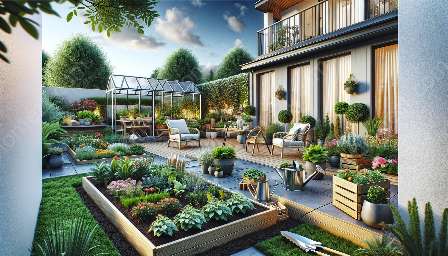Are you ready to take your gardening to new heights? Raised bed gardening offers a plethora of benefits, from improved soil drainage and better accessibility to increased plant yield and easier weed control. Whether you're an experienced gardener looking to optimize your space or a beginner eager to create a thriving garden, this comprehensive guide will cover everything you need to know about raised bed gardening and how to make it compatible with your yard and patio.
Benefits of Raised Bed Gardening
One of the primary advantages of raised bed gardening is the enhanced soil quality. By creating a raised growing area, you can control the type and quality of soil used, ensuring optimal conditions for your plants' growth. Additionally, the elevated nature of raised beds promotes better drainage, preventing waterlogging and root rot.
Furthermore, the raised height of these beds provides easier access for planting, pruning, and harvesting. This can be especially beneficial for individuals with mobility issues, as it reduces the need to bend or stoop while tending to the garden.
Another key benefit of raised bed gardening is the ability to create ideal growing conditions for specific plants. Different sections of the garden can be tailored to accommodate the unique needs of various crops, maximizing their growth potential.
Designing Your Raised Beds
When planning your raised bed garden, consider the layout and aesthetics to ensure compatibility with your yard and patio. You can incorporate various materials such as wood, metal, or composite boards to construct the beds, allowing for flexibility in design and customization.
Additionally, the dimensions of the raised beds can be tailored to fit the available space, making it easy to integrate them seamlessly into your existing outdoor area. This opens up opportunities to create striking visual elements, such as symmetrical arrangements or tiered designs that complement the overall landscape.
For those with limited space, vertical or tiered raised beds offer a creative solution to maximize planting area while minimizing the footprint. This approach allows you to grow an abundance of plants in a small space, making it perfect for urban or compact settings.
Choosing the Right Plants
With raised bed gardening, you have the freedom to select plants that thrive in specific soil conditions, creating an opportunity to cultivate a diverse range of flora. Additionally, the controlled environment of raised beds can extend the growing season, allowing for the cultivation of plants that may struggle in the ground during certain times of the year.
When choosing plants for your raised beds, consider factors such as sunlight exposure, water requirements, and companion planting to optimize the overall garden ecosystem. By carefully selecting and arranging your plants, you can enhance the beauty and functionality of your yard and patio while enjoying the rewards of a bountiful harvest.
Maintaining Your Raised Bed Garden
Regular maintenance is vital for the success of a raised bed garden. This includes tasks such as watering, pest control, and soil amendment. However, the elevated nature of raised beds can make these tasks more convenient and less physically demanding compared to traditional ground-level gardens.
Consider installing a drip irrigation system or self-watering containers to ensure consistent moisture levels within the raised beds. This can help minimize water wastage and simplify the watering process, especially during hot and dry periods.
Furthermore, practicing natural pest control methods and regularly inspecting plants for signs of disease can help maintain a healthy garden ecosystem. Additionally, periodic soil testing and amendment will ensure that the growing medium remains fertile and balanced for optimal plant growth.
Enhancing Your Outdoor Space
Integrating raised bed gardening into your yard and patio can transform these areas into inviting and vibrant spaces. The careful selection and arrangement of raised beds can enhance the overall visual appeal, serving as focal points or borders that define different zones within your outdoor environment.
Furthermore, the lush vegetation of raised bed gardens can provide shade, privacy, and a sense of tranquility to your yard and patio. With strategic placement, raised beds can create natural barriers, screen unsightly views, or even act as living partitions to define distinct areas for relaxation, dining, or entertainment.
Conclusion
Raised bed gardening offers a multitude of benefits, making it a practical and visually appealing addition to any yard and patio space. By understanding the advantages and principles of raised bed gardening, you can create a harmonious and productive garden that complements your outdoor environment. Whether it's optimizing space, enhancing soil quality, or elevating the aesthetic appeal of your surroundings, raised bed gardening unlocks the potential for limitless creativity and abundance.



